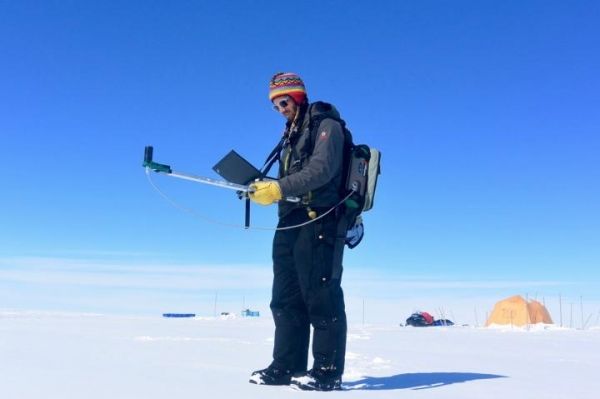A weather pattern that pushes snowfall away from parts of Greenland's ice sheet is causing the continent to become darker and warmer, according to research published in Geophysical Research Letters.
The reduction in the amount of fresh, light-colored snow exposes older, darker snow on the surface of the ice sheet. The resulting decrease in reflectivity, known as albedo, causes the ice to absorb more heat, also likely contributing to faster melting.
"As snow ages, even over hours to a few days, you get this reduction in reflectivity, and that's why the fresh snow is so important," says Erich Osterberg, associate professor of earth sciences and the principal investigator of the study.
According to the research, the decrease in snowfall is the result of "atmospheric blocking" in which persistent high-pressure systems hover over the ice sheet for up to weeks at a time. The systems, which have increased over Greenland since the mid-1990s, push snowstorms to the north, hold warmer air over Western Greenland, and reduce light-blocking cloud cover.
Read more at Dartmouth College
Image: Dartmouth researcher Gabriel Lewis measures reflectivity on Greenland's ice sheet during a 2016 research expedition. According to a Dartmouth research paper, a reduction in fresh snowfall has caused parts of Greenland to become darker and may lead to additional surface melt. (Credit: Photo by Forrest McCarthy)


